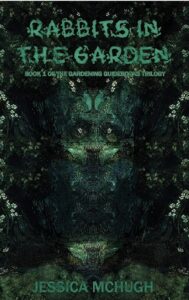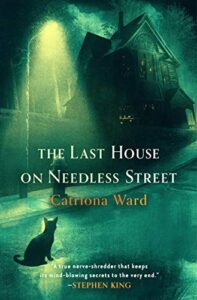Rabbits in the Garden (Gardening Guidebooks #1) by Jessica McHugh
Ghoulish Books, 2022
ISBN: 978-1943720736
Available: Paperback
Buy: Bookshop.org | Amazon.com
After reading Jessica McHugh’s Rabbits in the Garden, readers will never look at rabbits or gardening tools in quite the same way again.
Avery’s mom has a creepy interest in her garden, as well as in keeping Avery and her sister on the straight and narrow when it comes to boys. She is a big believer in correcting people’s negative proclivities with her own brand of vigilante justice… as in, murdering them.
Unfortunately for Avery, her innocent friendship with Paul and her weird mother-assigned responsibility for the behavior of rabbits in the family garden lead her to discover the truth about her mother’s evil ways, and put her in danger of spending the rest of her life in a nightmarish insane asylum. Her fellow residents have some serious problems and believe that Avery is trying to hide hers. The staff employs brutal methods designed to punish rather than heal.
Avery struggles throughout the book, fighting against the lies that have been told about her, defending herself against the horrible crimes she has been accused of by her own mother, and dealing with the survival friendships she makes with the mentally ill where she has been imprisoned. The odds of changing her situation seem impossible, and Avery suffers far more disappointments than successes along the way.
Although the restrained language and minimal horrific and sexual detail might appropriately put this story of young love and family dynamics under the YA umbrella for some, an adult reading of Rabbits in the Garden as a coming-of-age horror novel also propels the book over the YA line to older readers who will appreciate McHugh’s excellent storytelling and dynamic style. Even after the worst acts in the book have already been committed, there are always still more to come. Even after the most intense human responses to betrayal, emotional/physical pain and loss occur, there are inevitably still more of those to come too, but in supernatural form. This leads to a fast and furious build up of tension, anxiety, and crushing fear that grow in the shadow of evil and finally explode in the last chapters.
Is Avery a lesson in female empowerment in the fight against injustice or will she be an example of “like mother, like daughter”? This is the first book of The Gardening Guidebooks Trilogy, so we will find out.
Reviewed by Nova Hadley







Follow Us!